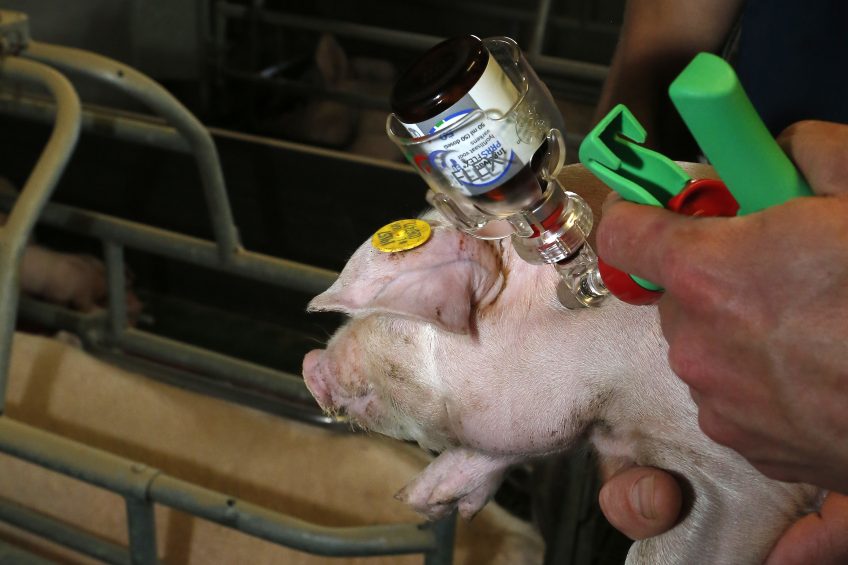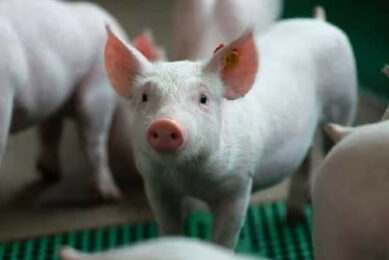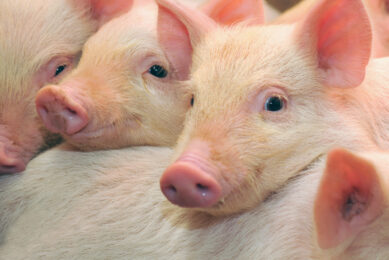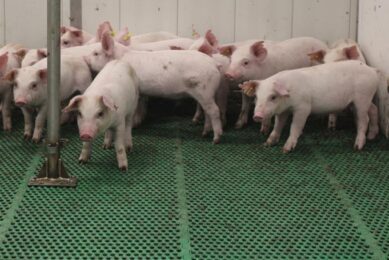Leaving pig health to the next generation

Pig health expert David Burch has been writing weblogs for Pig Progress for over 10 years. He now feels it is time to finally enjoy his retirement. He has written over 100 weblogs – good for about half a million hits. Here is his latest – and last – pig health contribution.
During this time, we have tried to deal with a variety of issues such as circovirus infections and described the benefits of vaccination, back in 2008. We warned of the threat of coronavirus infections, causing Porcine Epidemic Diarrhoea (PED) in the US and Canada, imported from China and its potential transmission to the EU from the US via breeding companies and advised a tightening up of import biosecurity. We are now facing a similar threat from the spread of African Swine Fever.
I have tried to encourage good management of the pigs under our care and discussions on tail docking still received the largest number of hits. This is a project, which is ongoing, along with other complex welfare issues such as castration and housing of sows.
Antibiotic usage, monitoring and legislation
Latterly, I have been heavily involved with antibiotic use in pigs and other species, antimicrobial resistance and demonstrating the low risk of resistance transmission to man from animals in comparison with human use.
It is a great pleasure to read that the UK has reduced antibiotic consumption in pigs in the last year, so that it is down by 50% or approximately 100 tonnes of active over the last 3 years.
Reaching antibiotics targets
They have reached 131 mg/kg PCU which is a tremendous achievement, with a target of 99 mg/kg PCU by 2020. The credit is due to the Responsible Use of Medicines in Agriculture Alliance (RUMA), an across industry working group and the Veterinary Medicines Directorate (VMD) to activate and coordinate the targets for reduction of 60% by 2020, through the National Pig Association (NPA – producers) and Pig Veterinary Society (PVS – vet practitioners).

Read more on pig health in the Pig Progress Health Tool
The Agriculture and Horticulture Development Board (AHDB) have been coordinating and monitoring the use of antibiotics at a farm level for individual pig producers. This really is a success story and one I was delighted to be directly involved with, in its early days.
All this is before the introduction of legislation by the EU, which some of us feel is rather draconian, impractical and may damage animal welfare, particularly when it comes to preventive use of antibiotics. It is likely to limit a veterinarian’s choice how to control infections in groups of animals. This may be approved as early as June 2018, under the Bulgarian presidency due to recent reports.
Zinc and copper reductions in pigs
There have been a number of battles over the use of minerals for ‘therapeutic’ reasons in pigs around the time of weaning. The battle over the use of 3,200 ppm of zinc oxide in feed after weaning to prevent post-weaning diarrhoea was the first case.
Unfortunately, despite extensive scientific discussions and lobbying, the product will be banned in the EU in a further 4 years. We must be grateful that the EU Commission did not ban it immediately, as proposed by the European Medicines Agency (EMA), as it gives farmers and feed companies time to find alternatives.
All About Feededitor Emmy Koeleman interviewed FEFAC Animal Nutrition Committee expert Erik Dam Jensen on the copper issue
Retaining a higher use for 4 weeks after weaning
We were delighted to see that European Feed Manufacturers Association (FEFAC) had more success with the European Food Safety Authority (EFSA) and the EU Commission over the use of copper and they have agreed to retain a higher use of 150 ppm for 4 weeks after weaning to help them get over this difficult period, rather than cut it to 25 ppm only, which was proposed.
Fortunately, the fights over zinc oxide and the requirement to reduce the use of antibiotics may have had some supportive influence.
Human antibiotic use and resistance
The first reports of ‘Super-gonorrhoea’ have emerged (I am not sure what would be super about gonorrhoea, a sexually transmitted infection), which was multi-resistant to cephalosporins, ceftriaxone and the macrolide, azithromycin. A poor young gentleman returned from Asia to the UK with the infection.
Read more on the UK’s antibiotic reduction achievements in swine
This caused great concern here, although in certain parts of the world it is becoming increasingly common. This cannot be put down to the veterinary use of antibiotics and clearly demonstrates the problems in human medicine. Eventually they did find a cure for the unfortunate man, using a carbapenem.
Treatment of multi-resistant Gram-negative bacteria
Another recent report in man compared the use of a carbapenem, imipenem (not used in veterinary medicine and a last-resort antibiotic in man) with a new beta-lactamase inhibitor relebactam to treat multi-resistant Gram-negative bacteria and compared it with a combination of colistin and imipenem.
Both combinations appeared to work well initially, with a similar 70% success rate but of interest for the advocates of human medicine use of colistin, the colistin combination caused a higher incidence of adverse effects and treatment-emergent nephrotoxicity (kidney damage) in 56% of these patients, in comparison with 10% in the imipenem/relebactam group. It may not be surprising therefore, why colistin was dropped as a human medicine 40-50 years ago.
Resistance in human migrants
Resistance in human migrants has also been looked into, following the recent 2 million mass migrations into the EU. The incidence of antimicrobial resistance was found to be very high with methicillin-resistant Staphylococcus aureus (MRSA) carriage being 25.4% in comparison with an average of around 2% in the EU population.
We recently estimated that pig-associated transmission of methicillin-resistant Staphylococcus aureus (MRSA) to man in the EU was 0.0158% only. The high incidence in migrants was thought to be associated with “Poor social conditions in these settings (crowded refugee camps and detention centres) such as inadequate sanitation, overcrowding and restricted access to health services (including antibiotics and vaccinations), which favour the spread of antibiotic-resistant infections.”
These examples highlight some of the global problems human medicine are facing and the relatively minor impact that the transmission of resistance from animals to man is actually having in the One Health debate, but we must try not to add to it.
Conclusion
I would like to thank my readers from all branches of the pig industry and associated bodies, which have read my weblogs over the years; it has been my pleasure to serve them and I wish them every success in the future.
We can now leave it to the next generation – see below!













